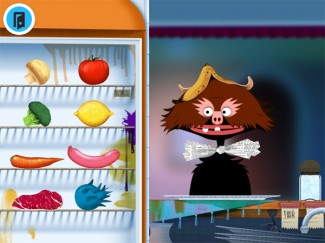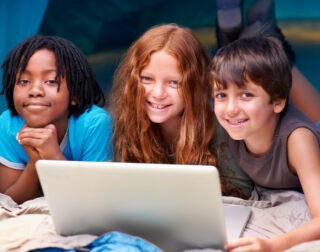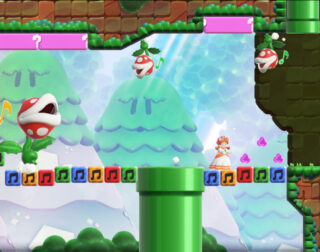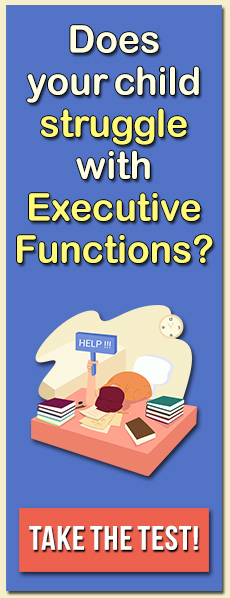Two of the biggest talking points in the world of early childhood education are “free play” and “technology,” terms that are usually at odds with each other.
Blended learning is the thing right now (and for the foreseeable future), and more and more schools are adopting this approach. STEM/STEAM, coding, Kahn Academy, Minecraft.edu — elementary school in the United States looks very different than it did not even 5 years ago, and it’s not just because of Common Core. Technology can make classrooms bigger and better and affords students and teachers resources and experiences that were never before possible.
[cjphs_content_placeholder id=”73534″ random=”no” ]Using the Internet, apps, and games to reach kids at an early age and teach them both traditional and 21st century skills seems to just makes sense. The future careers of today’s children will inevitably rely on a foundation of digital literacy. But concerns about ADHD, childhood depression and anxiety, and a lack of active free play time (I’ve come to call it the “Recess Recession”) are growing. Some schools don’t even call it recess anymore. As Utah enrolls 4-year-olds in online preschool and New York City prepares to introduce its kindergartners to coding, American eyes have turned toward Finland with its seemingly lackadaisical view on children’s schooling.
This video from Fatherly has been widely shared on Facebook.
An article recently published in The Atlantic describes firsthand the carefree Finnish kindergarten experience that emphasizes play over learning math and reading skills. On its heels came a video produced by parenting blog Fatherly, which breaks down the ways the education system in Finland is so much “cooler” than that of the United States; Finnish children start school at the age of 7, get 75 minutes of recess, don’t get homework until high school, and their teachers are better compensated.
And recent research confirms that these details are likely the key to Finland’s well-known overall academic success. Stanford researchers have just published a study that found that delaying kindergarten by just 1 year can reduce hyperactivity and inattention—two well-known symptoms of ADHD—by an astounding 75%.
More and more experts are speaking out against the drastic reduction in recess and free play time in American schools, some going so far as to cite kids’ increasingly sedentary lifestyles as the root of many ADHD diagnoses. It cannot be denied that free play is necessary for building the kinds of skills and positive psychology habits in children that result in happy, well-adjusted, and successful adults.
So what are parents in this country to do when it’s not just tradition but science telling us our children just aren’t getting enough sunshine and dirt? It’s hard to know what’s right when we are advised to make sure that our kids can not only read and do math, but are good digital citizens who can code, design, and engineer. How do we make sure we aren’t headed for a future that looks like the ending of Wall-E?
There is no doubt that video games are beneficial, and that blended learning is and should be the way of the future. But free play is vital, and LearningWorks for Kids has always recognized this. That’s why we recommend a balanced Play Diet, of which digital, social, creative, active, and free play are equally important parts. But is that just wishful thinking? Can free play and technology coexist, really?
Depends on the kid Perhaps in a perfect world all kids would find fresh air intoxicating, hiking trails exciting, and running through grassy fields more fun than screen time. The fact is, some kids just don’t. Bookishness has been an adjective since long, long before the Internet (hence the “book” part), describing a person’s desire to read or study, usually indoors, rather than run around and exercise. If all of a child’s recreation time is spent passively consuming digital entertainment, that can be a tad problematic. But if your child’s personality is such that they simply find reading and creating in electronic environments more stimulating than running around outside, that really is okay. Avoid the nostalgia trap by reminding yourself of how hilarious it is that people in the 19th century worried that chess would rot people’s brains.
Digital play can be free play Video games and apps today are so advanced that they can offer players whole worlds in which they have relatively free reign. This format is commonly referred to as a “sandbox” (app studio Toca Boca uses the term “digital toy”), in which there are few limitations or rules imposed by the developers. Minecraft is perhaps the most popular example of this. While we here at LW4K don’t recommend that all free play for all children consists of playing sandbox games, these games do encourage the imagination and creativity that is so valuable in traditional free play, as well as exercising a variety of executive function skills.
Digital play can be active play While not exactly free play to purists, most would agree that active play is often better than sedentary recreation. Console peripherals like the Wii U’s sensor bar and Wiimotes, the PlayStation Move, and the Xbox Kinect make living rooms, family rooms, and even bedrooms into game environments, and players’ bodies into controllers. There are even websites like GoNoodle, an online hub for physical exercise games and videos, that are helping teachers incorporate physical and free play into their classrooms without having to wait for recess time (or settle for inadequate recess times).
Gamification Gamification is a philosophy and a phenomena. Made popular by game developers like Jane McGonigal (SuperBetter) and adopted by businesses and schools, gamification takes the stimulating, engaging, and rewarding aspects of video games and applies them to real life. Real life responsibilities, including self-care and social interaction, chores, homework, and exercise, are suddenly super fun (or at least tolerable) because they carry immediate, tangible rewards. Saying no to that soda in the cafeteria is just another challenge, getting an A on that test becomes a mission, helping gather the items on a grocery list a quest. Because users can add their own quests, points could just as easily be earned for a nature walk, a game of tag, or getting through two consecutive hours without screen time.
Limit setting Sometimes technology is a very real issue. If screen time is in fact problematic in your household, you are right to worry and work toward reform. This can be especially difficult if you have children affected by autism or ADHD, as they tend to be particularly drawn to technology. We have written extensively about screen time limits and how to impose them, from talking to your kids to finding the right parental blocks. Try this article to start, or follow this link to see more blog posts about setting screen limits.







